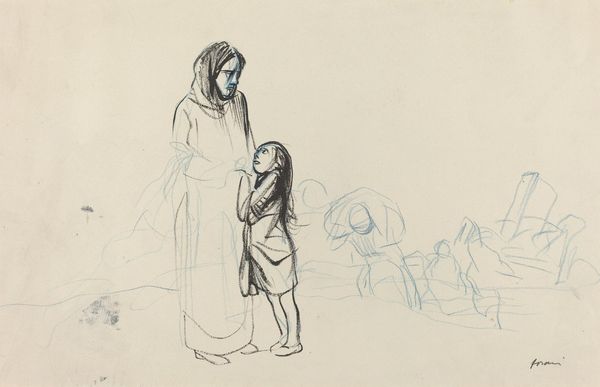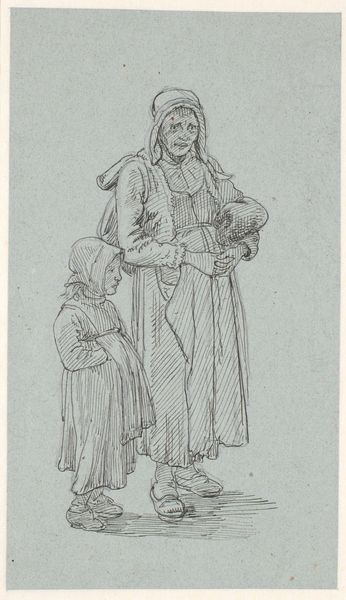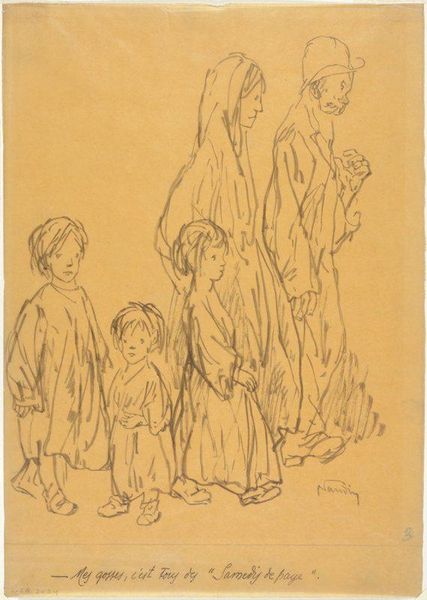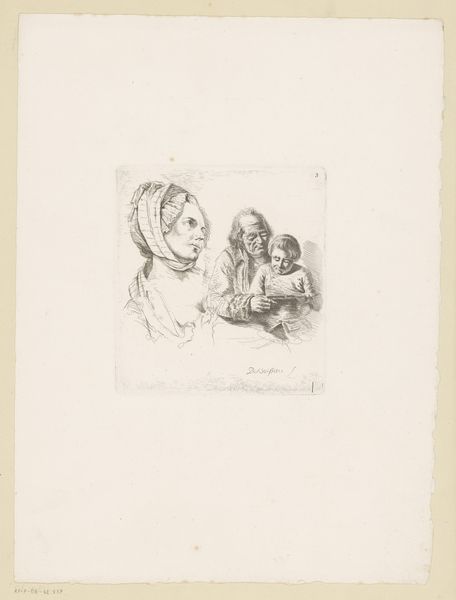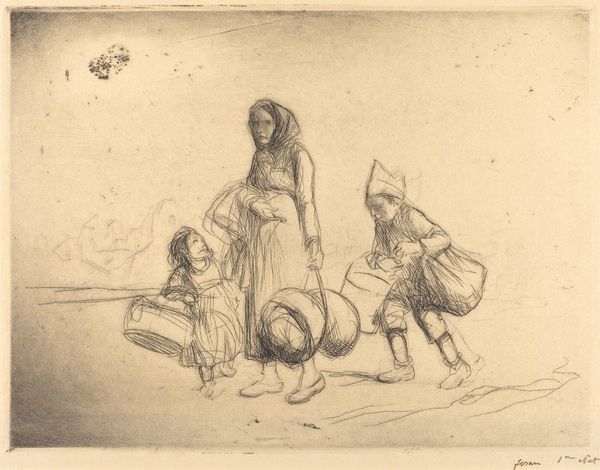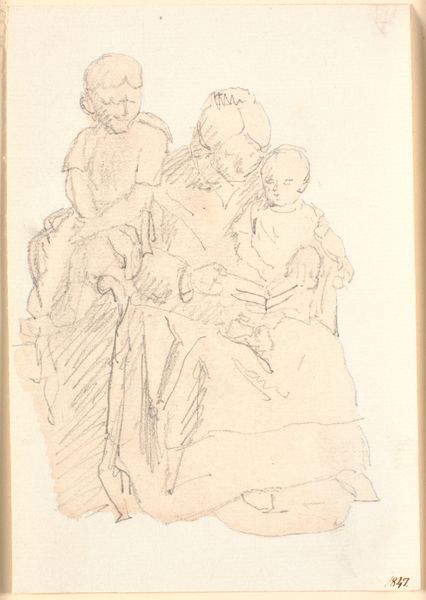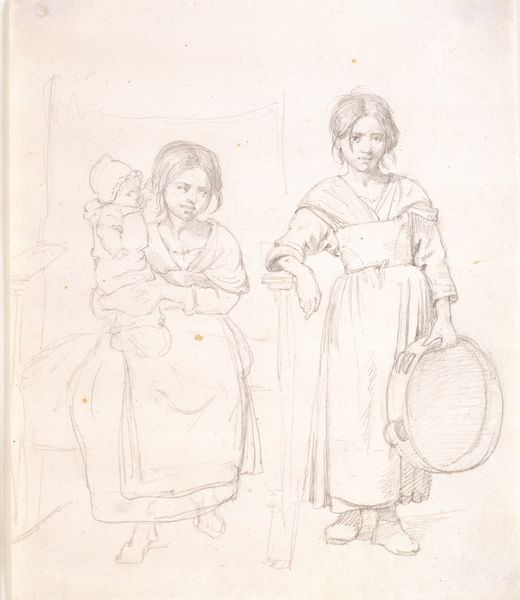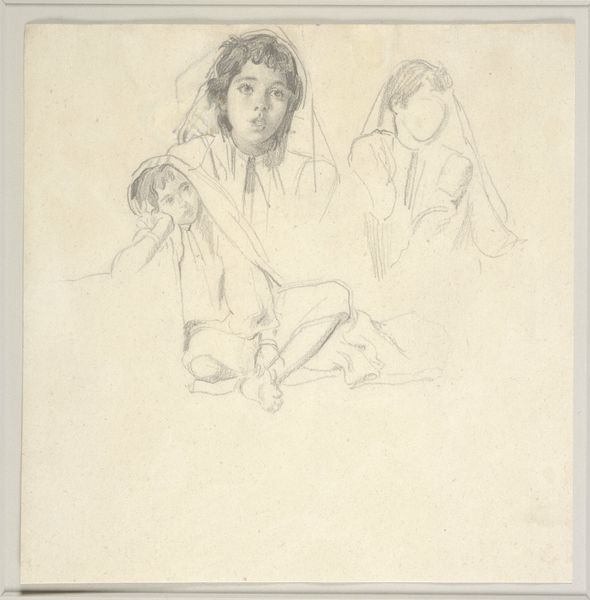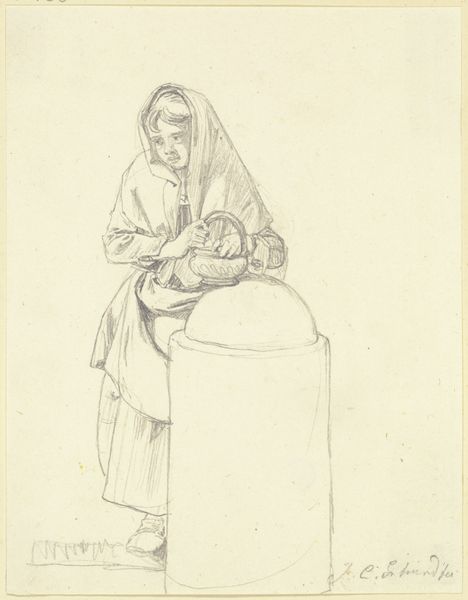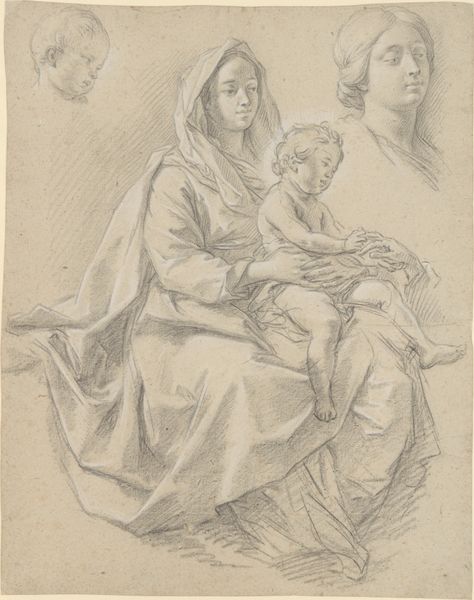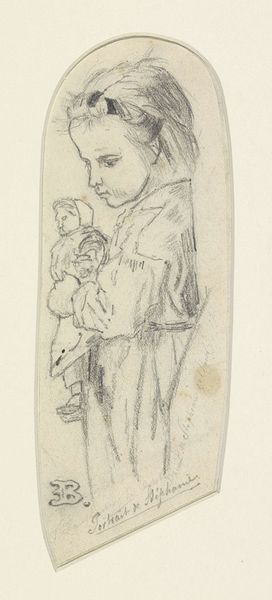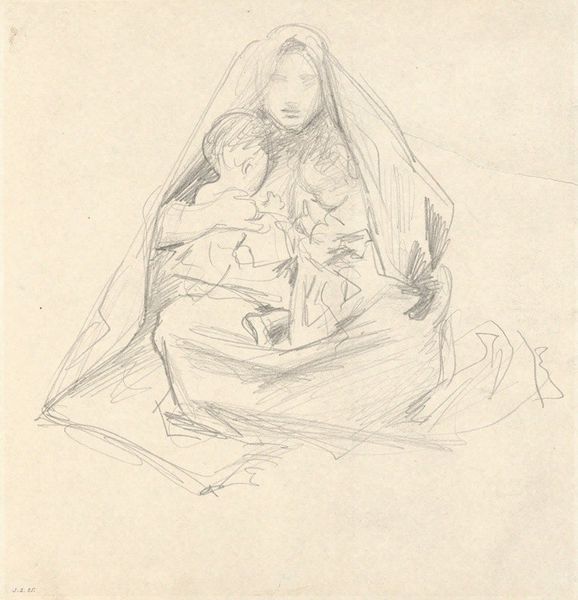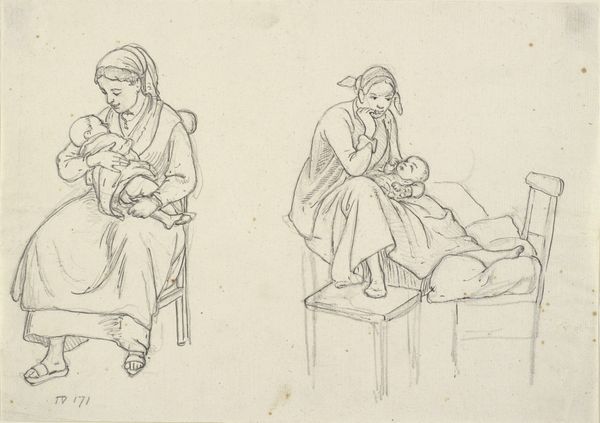
drawing, pencil
#
portrait
#
drawing
#
figuration
#
group-portraits
#
pencil
Dimensions: 10 3/8 x 8 1/2 in. (26.35 x 21.59 cm)
Copyright: No Copyright - United States
Curator: Welcome. We're standing before Albert Marquet's drawing "Three Women of Ghardaia," believed to be from the early 20th century, currently residing at the Minneapolis Institute of Art. It’s rendered in pencil. Editor: My first impression is one of quiet dignity. There's a delicacy to the lines that softens what could otherwise be a rather formal composition. Curator: Indeed. The artist’s strategic use of pencil generates subtle variations in shading. The rendering of drapery invites our observation—light delicately traces each fold, imparting a unique textural depth to their garments. Editor: I’m also drawn to the simplicity of the materials – just pencil on what seems to be paper. This emphasizes the process. What kind of pencil was used? What was the source and quality of the paper available in Ghardaia at that time? The availability of tools like these certainly influenced the image and access to this kind of portrayal. Curator: Fascinating questions. We can interpret their positioning within the frame as a semiotic device. Their direct gazes are, arguably, inviting while holding the viewer at a distance, but their arrangement within the pictorial space constructs relationships of power between the viewer and the observed. Editor: Absolutely, and considering that they’re barefoot while formally posed adds another layer to that discourse, a direct connection with the ground itself. How did these women feel being portrayed in this way by an outsider? Curator: That’s a difficult thing to discern. It opens further interpretive frameworks, of course, through lenses of gender, class, and post-colonial inquiry, and that dialogue helps shape our modern interpretations. Editor: The marks visible from the medium make us think of the artist's labor as well as the subject’s. Pencil enables us to see, layer upon layer, his movement across the surface as he created it. This emphasis makes Marquet a vital commentator for considering material. Curator: Thinking about line, shade, and overall composition allows us a deeper understanding of this understated but ultimately beautiful group portrait. Editor: Considering its simple method and rich subject matter provides, conversely, an important framework for the examination of both process and subject, of artist and muse.
Comments
No comments
Be the first to comment and join the conversation on the ultimate creative platform.
